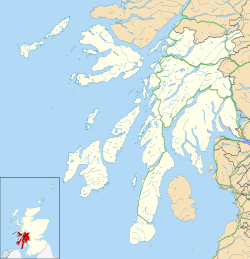This article needs additional citations for verification .(February 2021) |
Glen Orchy
| |
|---|---|
Location within Argyll and Bute | |
| Council area | |
| Lieutenancy area | |
| Country | Scotland |
| Sovereign state | United Kingdom |
| Post town | Bridge of Orchy – Dalmally |
| Postcode district | PA36 – PA33 |
| Dialling code | 01838 |
| Police | Scotland |
| Fire | Scottish |
| Ambulance | Scottish |
| UK Parliament | |
| Scottish Parliament | |

Glen Orchy (Scottish Gaelic : Gleann Urchaidh) is a glen in Argyll and Bute, Scotland. It runs from Bridge of Orchy to Dalmally.

